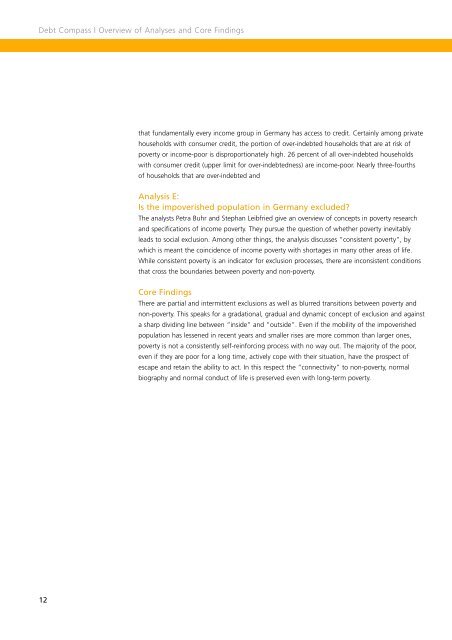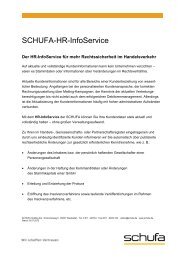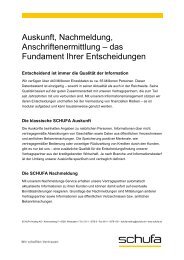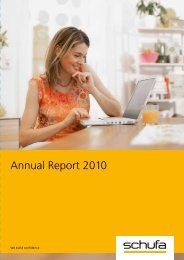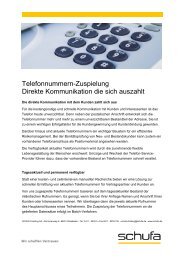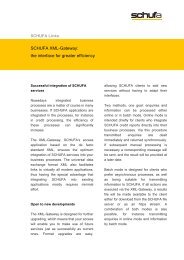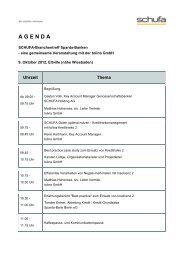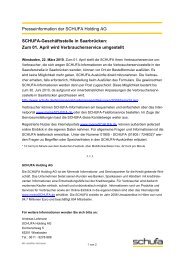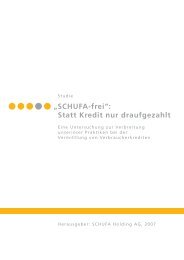Abridged English version of the SCHUFA Credit Compass 2008
Abridged English version of the SCHUFA Credit Compass 2008
Abridged English version of the SCHUFA Credit Compass 2008
Create successful ePaper yourself
Turn your PDF publications into a flip-book with our unique Google optimized e-Paper software.
Debt <strong>Compass</strong> | Overview <strong>of</strong> Analyses and Core Findings<br />
12<br />
that fundamentally every income group in Germany has access to credit. Certainly among private<br />
households with consumer credit, <strong>the</strong> portion <strong>of</strong> over-indebted households that are at risk <strong>of</strong><br />
poverty or income-poor is disproportionately high. 26 percent <strong>of</strong> all over-indebted households<br />
with consumer credit (upper limit for over-indebtedness) are income-poor. Nearly three-fourths<br />
<strong>of</strong> households that are over-indebted and<br />
Analysis E:<br />
Is <strong>the</strong> impoverished population in Germany excluded?<br />
The analysts Petra Buhr and Stephan Leibfried give an overview <strong>of</strong> concepts in poverty research<br />
and specifications <strong>of</strong> income poverty. They pursue <strong>the</strong> question <strong>of</strong> whe<strong>the</strong>r poverty inevitably<br />
leads to social exclusion. Among o<strong>the</strong>r things, <strong>the</strong> analysis discusses “consistent poverty”, by<br />
which is meant <strong>the</strong> coincidence <strong>of</strong> income poverty with shortages in many o<strong>the</strong>r areas <strong>of</strong> life.<br />
While consistent poverty is an indicator for exclusion processes, <strong>the</strong>re are inconsistent conditions<br />
that cross <strong>the</strong> boundaries between poverty and non-poverty.<br />
Core Findings<br />
There are partial and intermittent exclusions as well as blurred transitions between poverty and<br />
non-poverty. This speaks for a gradational, gradual and dynamic concept <strong>of</strong> exclusion and against<br />
a sharp dividing line between “inside” and “outside”. Even if <strong>the</strong> mobility <strong>of</strong> <strong>the</strong> impoverished<br />
population has lessened in recent years and smaller rises are more common than larger ones,<br />
poverty is not a consistently self-reinforcing process with no way out. The majority <strong>of</strong> <strong>the</strong> poor,<br />
even if <strong>the</strong>y are poor for a long time, actively cope with <strong>the</strong>ir situation, have <strong>the</strong> prospect <strong>of</strong><br />
escape and retain <strong>the</strong> ability to act. In this respect <strong>the</strong> “connectivity” to non-poverty, normal<br />
biography and normal conduct <strong>of</strong> life is preserved even with long-term poverty.


